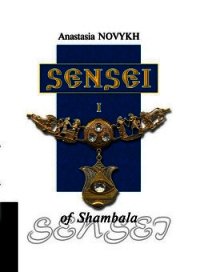The Journeyer - Jennings Gary (книга читать онлайн бесплатно без регистрации .TXT) 📗
They had been invented, said Arun, by a long-ago Myama Queen of Ava, whose king-husband had been woefully inclined to prefer the company of small boys. The queen made mata ling of brass and—Arun did not say how—secretly slit the skin of the king’s kwe, put in a number of the little bells and sewed him up again. Thereafter, he had not been able to penetrate the small orifices of small boys with his newly massive organ, and had had to make do with the more hospitable hii receptacle of his queen. Somehow—again Arun did not say how—the other women of Ava heard of that, and persuaded their own men to follow the royal precedent. At which, both the men and women of Ava found that they were not only being fashionable, but also had infinitely increased their mutual pleasures, the men being prodigiously bigger of circumference than before, and the vibration of the mata ling affording an ineffably new sensation to both partners in the act of aukan.
The mata ling were still made in Ava, said Arun, and only in Ava, and only by certain old women who knew how to do the implanting of them safely and painlessly and in the most effective places on the kwe. Every man who could afford one had at least one implanted, and those who could afford more might eventually have a kwe worth more than their money purse, and weighing more. She herself, said Arun, had formerly had a Myama master whose kwe was like a knotted wooden club, even in repose, and when it was aroused: “Ame!” She added that the love bells had undergone some improvement over the centuries since the queen invented them. For one thing, the Ava physicians had decreed that they be made of incorruptible gold instead of brass, so they would not cause infection under the delicate kwe skin. Also, the old women bell-makers had invented a whole new and exceedingly piquant capability for the mata ling.
Arun demonstrated for us. Some of the little things were only bells or rattles, as we had perceived, their inside pellets vibrating only when they were shaken. Some others, Arun showed us, lay equally inert when she put them on a table. But then she put one in each of our palms, and closed our hands around them. Hui-sheng and I both started in astonishment when, after a moment, the warmth of our hands seemed to confer life on the little gold objects, as if they had been eggs about to hatch, and they began quivering and twitching all by themselves.
That new and improved kind of mata ling, said Arun, contained some never-dying tiny creature or substance—the old women never would reveal what it was—which ordinarily slept quietly in its little gold shell underneath a man’s kwe skin. But when his kwe was inserted in a woman’s hii, the secret sleeper came awake and active and—she solemnly asserted—the man and woman could lie together unmoving, totally still, and yet enjoy, through the agency of that busy little love bell, all the sensations and the mounting excitement and finally the bursting pleasure of consummation. In other words, they could perform aukan, and over and over again, without the least exertion on their part.
When Arun had concluded, quite out of breath from her own exertions of explaining, I found her and Hui-sheng regarding me speculatively. I said loudly, “No!” I said it several times and in several different languages, including that of emphatic gestures. The idea of utilizing the mata ling in aukan was an intriguing one, but I was not going to sneak to some back door in some Pagan back alley and let some hag sorceress meddle with my person, and I made that as plain as I knew how.
Hui-sheng and Arun pretended to look at me with disappointment and disdain, but really they were trying not to laugh at the vehemence of my refusal. Next, they exchanged a glance, as if to say to each other, “Which of us should speak?” and Arun gave a slight nod, as if to say that Hui-sheng could more easily communicate with me. So Hui-sheng did, pointing out that the only function of the mata ling was to be put inside the female hii with the male kwe, not necessarily as part of it. Would I care to try the experience, she inquired with great delicacy (and no small amusement), by doing only what we did normally, but allowing herself and Arun to put the little love bells inside themselves beforehand?
Well, of course I could have no objection to that, and before the night was out I had developed a great fondness and enthusiasm for the mata ling, and so had Hui-sheng and Arun. But again I will draw the curtain of privacy here. I will confide only that I found the love bells such a worthwhile contrivance—and Hui-sheng and Arun concurred in my opinion—that I naturally thought of making those things the “unique gift” I would carry back to Kubilai. But I hesitated to decide definitely on that. One can hardly approach the Khan of All Khans, the most puissant sovereign in all the world, and he a dignified elderly gentleman besides, with the suggestion that he submit to an “improvement” of his venerable organ … .
No, I really could not think of any way to present the gift of mata ling that would not cause instant affront, resentment and perhaps an outraged reprisal. However, the very next day, I was relieved to receive an alternative idea, a most appealing one, and I proceeded to act upon it straightaway. A thing unique is one of a kind, and therefore it is an impossibility for anything to be “more unique” than something else. But if the durian fruit was unique in its way, and so was a white elephant, and so were the mata ling love bells, then this new idea was unique among uniquities.
It was the aged palace pongyi who put the idea in my head. He and I and Hui-sheng and Yissun were again strolling about Pagan, while he expatiated on this and that sight we saw. On this day, he led us to the most substantial and holiest and highest regarded p’hra in all of Ava. It was not just one of those hand-bell-shaped affairs, but an enormous and beautiful and really magnificent temple, dazzlingly white, like an edifice built of foam, if it is possible to imagine a pile of foam as big as the Basilica of San Marco, and intricately carved and roofed with gold. It was called Ananda, a word meaning “Endless Bliss,” which also had been the name of one of the Buddha’s disciples during his lifetime. Indeed, said the pongyi as he showed us around the temple’s interior, Ananda had been the Buddha’s best-beloved disciple, as John was Jesus’s.
“This was the reliquary of the Buddha’s tooth,” said the pongyi, as we passed a golden casket on an ivory stand. “And here is a statue of the dancing deity Nataraji. The sculpture was originally so perfectly made that it began dancing, and when a god dances the earth shudders. Our city was nearly shaken asunder, until the dancing image chipped off a finger in its cavorting, at which it quieted and became only a statue again. Therefore, to this day, all religious images are made with a single deliberate flaw. It will be so trivial that you may never see it, but it is there—just for safety’s sake.”
“Excuse me, Reverend Pongyi,” I said. “But did you, in passing, say that the casket yonder held the Buddha’s tooth?”
“It used to,” he said sadly.
“A real tooth? Of the Buddha himself? A tooth preserved for seventeen centuries?”
“Yes,” he said, and opened the casket to show us the velvet socket where it had lain. “A pilgrim pongyi from the island of Srihalam brought it here, some two hundred years ago, for the dedication of this Ananda temple. It was our most treasured relic.”
Hui-sheng expressed surprise at the large size of the tooth’s vacated resting place, and conveyed to me that the tooth must have been of a size to occupy the Buddha’s whole head. I relayed that rather irreverent remark to Yissun and he to the pongyi.
“Ame, yes, a mighty tooth,” said the old gentleman. “Why not? The Buddha was a mighty man. On that same island of Srihalam is still to be seen a footprint he made in a rock. From his foot size, the Buddha is calculated to have been nine forearms tall.”




